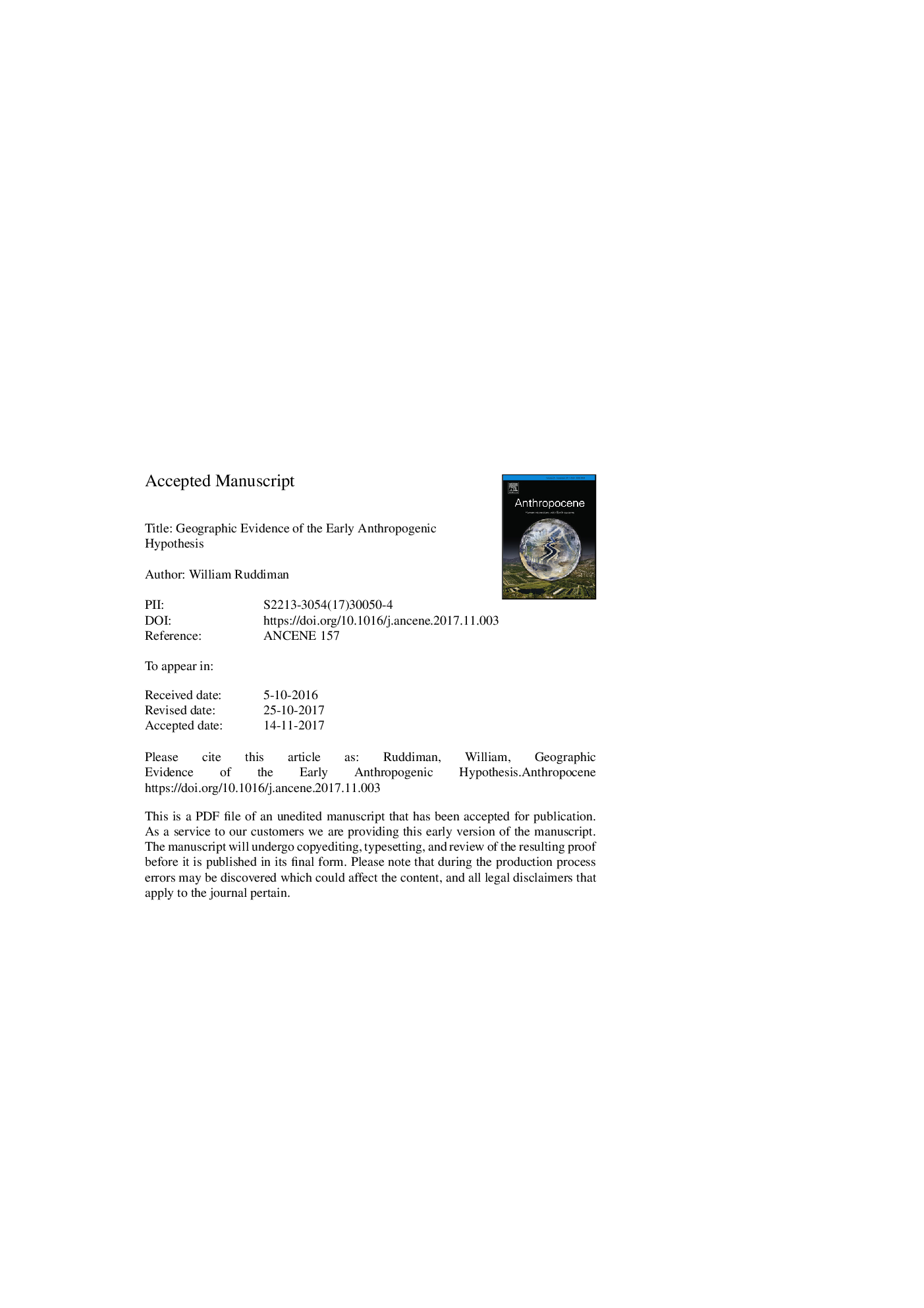| Article ID | Journal | Published Year | Pages | File Type |
|---|---|---|---|---|
| 8867191 | Anthropocene | 2017 | 31 Pages |
Abstract
The early anthropogenic hypothesis claims that millennia ago farming began to transform landscapes sufficiently to emit greenhouse gases and extend the natural warmth of the current interglaciation that had been initiated by orbital variations. Part of the debate over the hypothesis during the last dozen years has centered on determining the best orbital analog to the Holocene among prior interglaciations, all of which must have been natural (non-anthropogenic) in origin. Since 2009, dozens of papers have assembled physical geographic evidence that points to the kind of large early agricultural impacts posed by the early anthropogenic hypothesis. These new findings include: pollen and archaeological evidence of carbon dioxide (CO2)-emitting early forest clearance in Europe and China, along with archaeobotanical and archaeological evidence of methane (CH4)-emitting rice irrigation and livestock tending across southern Asia. In addition, mapping of 14C-dated peat deposits has revealed an important CO2 sink of 12C-enriched terrestrial carbon during the last 7000 years that countered the δ13CO2 imprint of emissions from early deforestation. This viewpoint article provides a current perspective on this ongoing debate in the context of these recent findings.
Related Topics
Physical Sciences and Engineering
Earth and Planetary Sciences
Atmospheric Science
Authors
William Ruddiman,
